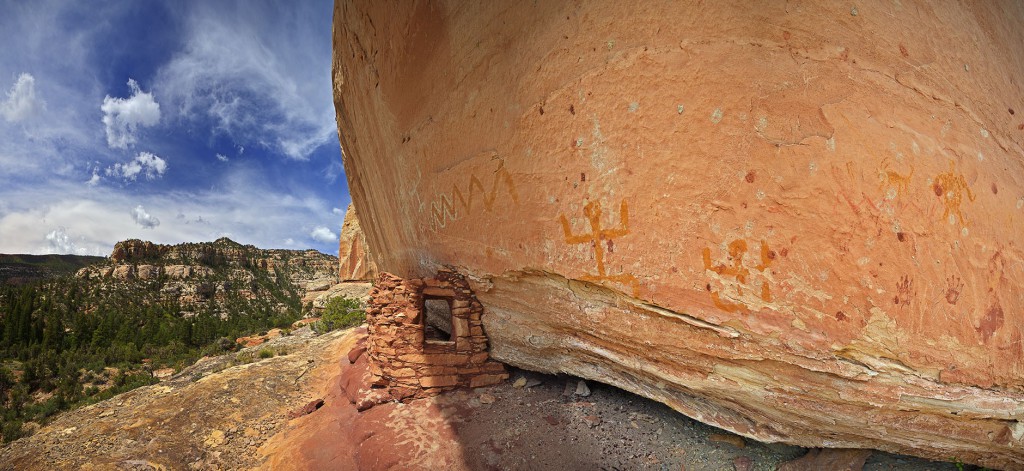The Antiquities Act, passed by Congress and signed into law by Theodore Roosevelt in 1906, gives the President of the United States the authority “to declare by public proclamation historic landmarks, historic and prehistoric structures, and other objects of historic or scientific interest that are situated upon the lands owned or controlled by the Government of the United States to be national monuments.” Since then, presidents from both parties have used this authority to establish over 150 national monuments. Importantly, though there have been several lawsuits filed challenging the establishment of national monuments, none of those decisions have been overturned.
Four out of five of Utah’s national parks were originally protected as national monuments, and of the state’s eight current monuments, two have been particularly newsworthy in recent years: Grand Staircase-Escalante and Bears Ears.
Grand Staircase-Escalante National Monument
Over the last 25 years, the 1.9 million-acre Grand Staircase-Escalante National Monument has claimed its place as a crown jewel of America’s public lands. Since its designation in 1996, it has come to be known as the “Science Monument”—yielding more than two dozen new species of dinosaur and other paleontological finds and providing habitat for 650 bee species, many that are endemic to the area.

On December 4, 2017, President Trump took the unprecedented action of assaulting Grand Staircase-Escalante National Monument, slashing it by nearly half and carving out lands coveted for potential coal extraction. While part of the area does include “technically recoverable” coal reserves, the looming climate crisis makes the idea of coal mining nothing more than economic and environmental folly. The Trump administration rushed through new management plans for both the lands excluded from the monument and the smaller areas that retained monument status. Those plans predictably drove management to the lowest common denominator and, if implemented, would destroy monument objects such as cultural sites and fossils.
Four years later, on October 8th, 2021, President Biden signed a proclamation restoring the monument to its full, original boundaries. The monument will now need a new comprehensive management plan, and in the meantime must be managed to meet the terms of President Biden’s proclamations.
Ongoing Litigation
Hours after Trump dismantled the monument, conservation organizations filed a lawsuit challenging the act as an abuse of the president’s power. SUWA and Natural Resources Defense Council are co-plaintiffs in this case and represented by in-house counsel. Earthjustice is representing eight organizations in the suit: The Wilderness Society, Grand Canyon Trust, Sierra Club, Defenders of Wildlife, Great Old Broads for Wilderness, Center for Biological Diversity, WildEarth Guardians and Western Watersheds. The Southern Utah Wilderness Alliance and Natural Resources Defense Council are co-plaintiffs in the lawsuit and represented by in-house counsel.
Now that President Biden has restored Grand Staircase-Escalante National Monument, the parties are discussing next steps, including whether the case should be stayed and potentially how to address mining claims located during the Trump years.
Resources:
- President Biden’s Proclamation Restoring Grand Staircase-Escalante National Monument (10/8/2021)
- Story Map of Grand Staircase-Escalante National Monument
- PDF Map of Grand Staircase-Escalante National Monument
Bears Ears National Monument
When President Obama used his authority under the Antiquities Act to designate Bears Ears National Monument on December 28th, 2016, he elevated the voices of the Native American Tribes who have ancestral ties to the region. The Bears Ears proposal was led by five Tribes—the Navajo Nation, The Hopi Tribe, the Pueblo of Zuni, Ute Mountain Ute, and Ute Indian Tribes. For the first time in American history, these Tribes would have a greater say in the management of these culturally significant lands.
The monument granted a new layer of protection to some of the most spectacular places in southern Utah, along with their irreplaceable cultural sites and fossils. There is of course Cedar Mesa, with its incredible canyons running toward the San Juan River. There is White Canyon to the west of Natural Bridges. There are the Bears Ears themselves and the high ponderosa forests of Elk Ridge. To the north there’s Beef Basin and Indian Creek. Nearly 100,000 archaeological and cultural sites were covered by the proclamation, including House on Fire and Moon House ruins.

On December 4, 2017, President Trump eviscerated Bears Ears National Monument, replacing it with two much smaller, non-contiguous units totaling less than 230,000 acres (an 83% reduction). The unprecedented act left rare archaeological sites and stunning wild lands without protection from looting, prospecting, oil and gas drilling, uranium mining, and off-road vehicle damage. The Trump administration also finalized a management plan for the much smaller monument that failed to fully protect the objects within its boundaries and largely excluded Tribal input.
Thankfully, four years later, on October 8th, 2021, President Biden signed a proclamation restoring Bears Ears National Monument to its full, original boundaries—plus an additional 12,000 acres previously added to the Trump-era monument. The monument will now need a new comprehensive management plan, and in the meantime must be managed to meet the terms of President Biden’s proclamations.
Ongoing Litigation
The five Tribes immediately sued President Trump over the repeal, and SUWA joined other conservation organizations in a separate lawsuit charging that the president violated the 1906 Antiquities Act and the U.S. Constitution by eviscerating the monument. The Natural Resources Defense Council and SUWA are co-plaintiffs in the case, represented by in-house counsel. Earthjustice is representing nine groups in the same lawsuit, including: The Wilderness Society, National Parks Conservation Association, Sierra Club, Grand Canyon Trust, Defenders of Wildlife, Great Old Broads for Wilderness, Western Watersheds, WildEarth Guardians, and the Center for Biological Diversity.
Now that President Biden has restored Bears Ears National Monument, the parties are discussing next steps, including whether the case should be stayed and potentially how to address mining claims located during the Trump years.
Resources:

